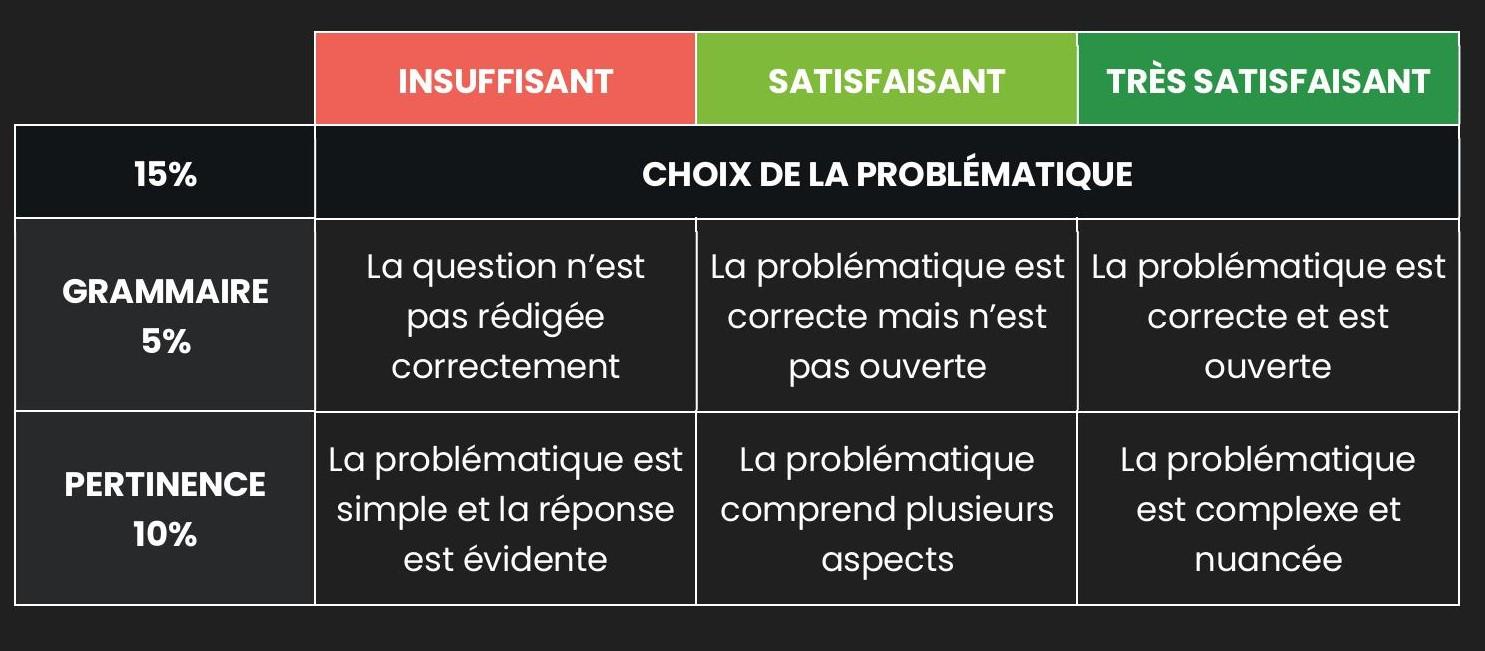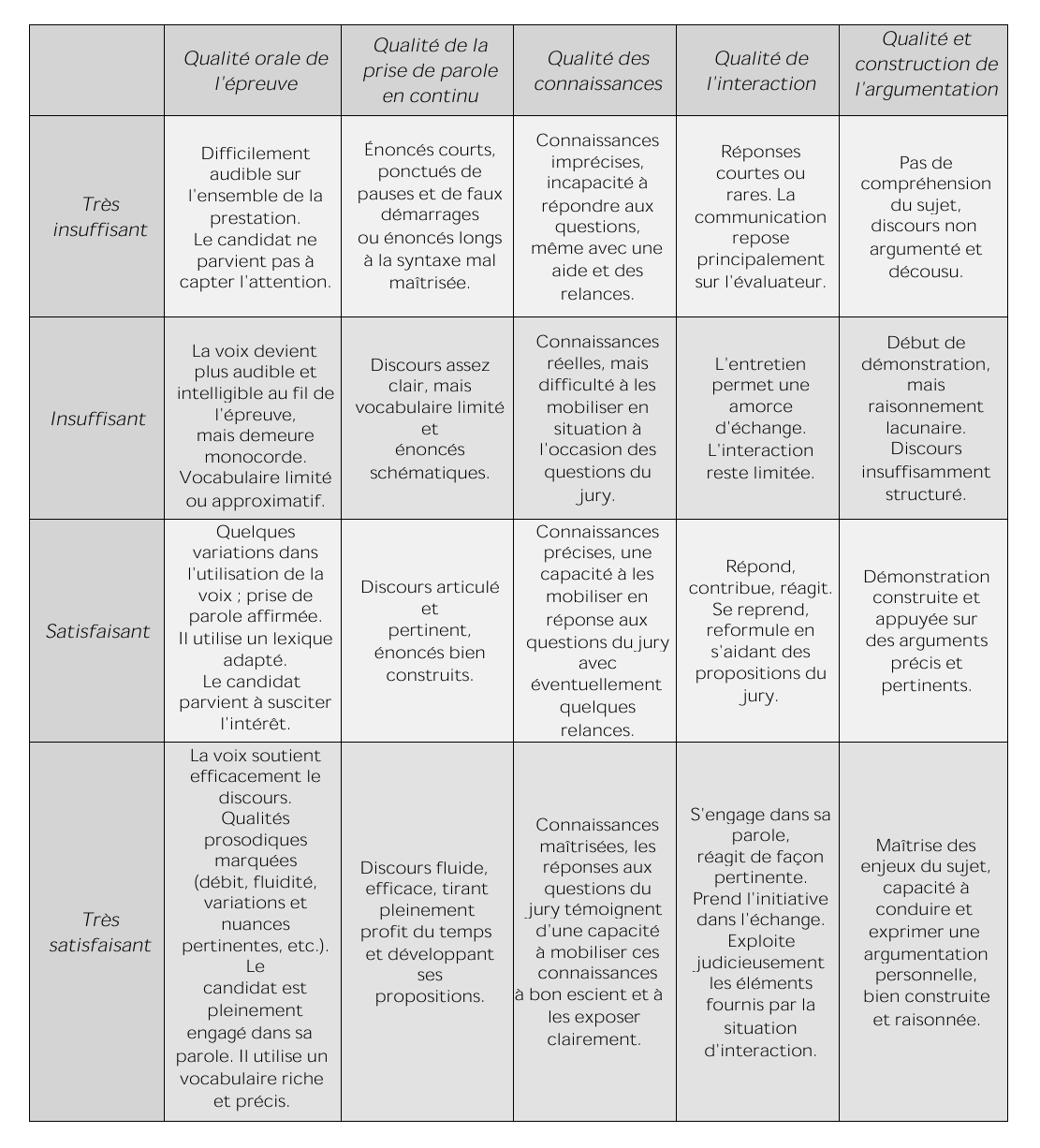I – Comparatifs des deux épreuves
Lorsque vous choisissez la spécialité AMC ou LLCE vous vous engagez à réaliser deux oraux notés pour le baccalauréat. Le premier oral sera celui du dossier personnel aussi appelé épreuve de spécialité orale tandis que le second sera celui du Grand Oral que tous les autres spécialités passent également.
| DOSSIER AMC | GRAND ORAL | |
|---|---|---|
| Objectif(s) | Montrer des capacités de recherches, de synthèse, de critique et d’analyse, le tout dans un anglais précis et compréhensible. | Montrer des capacités de synthèse et de vulgarisation (pour le jury naif) tout en ayant une analyse et un regard de spécialiste (pour le jury expert). |
| Temps de préparation | Pas de temps de préparation. | 20mns de préparation. |
| Temps de passage | 10mns de présentation + 10mns d’entretien en anglais. | 10mns de présentation + 10mns d’entretien en français (il est néanmoins possible de faire une courte partie en anglais). |
| Jury(s) | Un jury d’anglais | Un jury d’anglais et un jury d’une autre matière aléatoire |
| Support(s) | Dossier préparé pendant l’année et constitué d’un minimum de quatre documents anglophones. Pas de notes ni de surlignage ! | Notes préparées pendant le temps de préparation + la fiche question signée par les deux professeurs de spécialités et le proviseur. |
| Dates | Mi-mai | Fin juin |
II – Dossier AMC
Le dossier personnel doit être préparé pendant l’année. Il faudra en effet rendre un dossier constitué de plusieurs documents afin de répondre à une problématique de votre choix. Ces documents doivent être choisis avec pertinence et ne doivent pas simplement faire état d’un exposé de votre thématique.
Étape 1 – Le thème
Votre thème doit être en lien avec le monde anglophone. Il ne doit pas faire état d’un exposé (l’apartheid, par exemple) mais bien d’une question à laquelle il n’est pas évident de répondre (pourquoi la fin d’un système oppressif ne met-elle pas fin à l’oppression ?)
Enfin votre thème devra être en lien avec l’une des notions du programme. Vous pouvez cliquez sur les deux programmes ci-dessus pour avoir des idées de thématiques

Étape 2 – La problématique
Votre problématique doit être plus précise que votre thème et doit s’arrêter sur un aspect, un paradoxe, une particularité de votre sujet. Il faut essayer de comprendre la complexité de votre sujet :
- Quels sont les concepts que vous devez définir avant d’étudier votre sujets, certains concepts sont-ils en tension avec d’autres ?
- Est-ce qu’il y a différents points de vue à propos de votre thématiques ? Différents aspects qui entrent en contradiction ?
- Est-ce qu’il y a des débats, des controverses, des aspects sur lesquels il est difficile de trancher ?
Enfin il faudra formuler une problématique de manière claire et concise. Attention à ne pas rédiger des problématiques trops longues !

Étape 3 – Les documents
Votre dossier devra être constitué de quatre à six documents (pas moins, pas plus). Il faudra :
- Au moins un article de presse
- Au maximum deux textes qui ne sont pas de la presse (littérature, essai, discours, documents officiels, chanson, etc.)
- Au maximum deux illustrations (photo, graphique, peinture, poster, carte, etc.)
Enfin n’oubliez pas de raccourcir les parties de vos articles qui ne vous apportent pas de réponses afin d’alléger vore dossier. Attention ! Toutes parties retirées doit être remplacées par […].
⚠ N’oubliez également pas de bien sauvegarder les liens ou les PDF de vos articles avant de les perdre, même si vous n’êtes pas sûr de conserver cet article dans votre dossier !

Étape 4 – La structure
Follow the usual plan with an introduction, development and conclusion. Your development should have two or three parts, none of them should be focused on one document only. Each part should be about every documents.
Try to focus on the similarities and differences in every document. Which answer do they give to your problem question.

Étape 5 – Mise en page
Votre dossier va être imprimé et doit donc être mise en page au propre. N’oubliez pas d’intégrer tous ces éléments :
- Une page de garde avec : titre, nom prénom, année, notion du programme, problématique et image d’illustration (optionnel)
- Des sources à la fin de chaque document
- La numération des lignes
- La pagination en bas de page

Présentation orale du dossier
1ère partie – Présentation
Il n’y a pas de temps de préparation, et vous n’avez pas de notes si ce n’est que votre dossier (qui ne doit ni être annoté, ni surligné). Le jury doit également avoir un dossier, pensez donc bien à en ammener deux. Vous aurez ensuite 10mns pour présenter votre dossier et :
- Faire une brève introduction, présenter votre problématique et votre plan
- Citer les documents et argumenter la réponse que vous apportez à votre problématique
- Faire des liens entre les documents, montrer les similarités mais aussi les contrastes et comment ils éclairent la problématique
- Enfin conclure et répondre à votre problématique
2ème partie – Entretien
À la suite de ces 10mns de présentation vous aurez 10mns de questions du jury. Il faut voir ce temps la comme une interaction et non une interrogation. L’objectif est de clarifier et d’approfondir votre sujet qui ne peut être vu qu’en surface pendant 10mns. Voilà quelques astuces pour traverser ce moment un peu plus sereinement :
- Écoutez bien la question et n’hésitez pas à demander à répéter (could you say that again?) ou à reformuler (could you rephrase the question?)
- Donnez une réponse courte et claire, ne partez pas dans un monologue !
- Ne vous répétez pas (et ne dites pas « as I said before »). Le jury vous demande de nuancer, donner une autre perspective, argumenter, détailler ou illustrer avec des exemples.

Grille d’évaluation officielle de l’oral de spécialité d’AMC et LLCE (dossiers personnels)
III – Grand Oral
Préparation des questions
La préparation du Grand Oral se fait tout au long de l’année comme le dossier d’AMC. Cette préparation ne sera néanmoins pas évaluée même s’il y aura de nombreux retours dans l’année afin de suivre vos recherches. Ces retours se feront en même temps que les retours notés du dossier et sont déjà datés sur le calendrier annuel.
Enfin puisqu’il n’y a pas de constitution de dossier il n’y a pas de limites dans vos recherches. Le principe et la méthodologie est là même que pour le dossier : renseignez vous au maximum, contrastez les opinions et les idées et tentez de faire un plan qui met en avant les similarités et les paradoxes. N’oubliez pas de noter vos sources, elles pourront être demandés lors de l’entretien.
N’hésitez également pas à poser des questions à vos professeurs de spécialité. Nous pouvons pas toujours être derrière vous à vous demander ou vous en êtes en revanche nous sommes là pour vous éclairer dans vos recherches.
Présentation orale
Le jury est composé de deux professeurs de disciplines différentes, dont l’un représente l’un des deux enseignements de spécialité du candidat et l’autre représente l’autre enseignement de spécialité ou l’un des enseignements communs. L’objectif de votre présentation et qu’elle soit suffisement précise et complexe pour le jury spécialiste de la matière, mais également accessible, claire et vulgarisée pour que le jury qui ne répresente pas la matière comprenne et suive votre fil de pensée également.
Le jury valorise donc la solidité des connaissances du candidat, sa capacité à argumenter et à relier les savoirs, son esprit critique, la précision de son expression, la clarté de son propos, son engagement dans sa parole et sa force de conviction.

Grille indicative officielle du Grand Oral (académie de Versailles)


